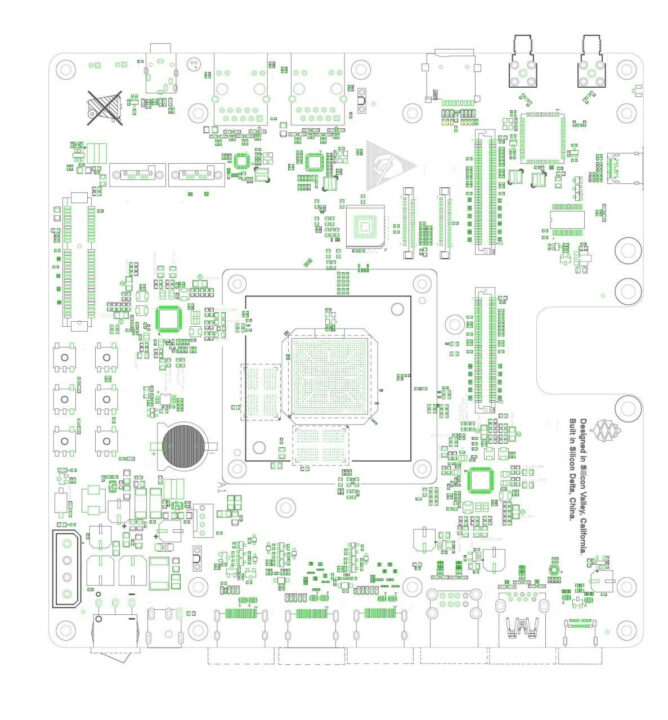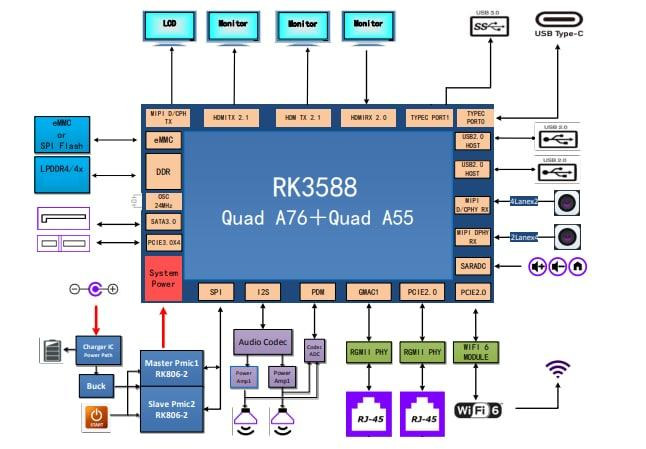As expected, Pine64 has now unveiled its own Rockchip RK3588 SBC with the QuartzPro64, joining many others from Radxa to Banana Pi, and lesser-known companies such as Mixtile and Mekotronics.
The QuartzPro64 single board computer will be equipped with 16GB RAM, 64GB eMMC flash, and with a large 180×180 mm form factor, offers plenty of ports including two HDMI outputs, one HDMI input, two SATA ports, two Gigabit Ethernet RJ45 connectors, and more.

QuartzPro64 specifications:
- SoC – Rockchip RK3588 octa-core processor with four Cortex-A76 cores @ 2.4 GHz, four Cortex-A55 cores @ 1.8 GHz, an Arm Mali-G610 MP4 GPU, a 6TOPS NPU, 8K 10-bit decoder, 8K encoder
- System Memory – 16GB LPDDR4x
- Storage
- 64GB eMMC flash
- 2x SATA ports
- MicroSD card slot
- Video Output – 2x HDMI 2.1 ports up to 8Kp60, 2x MIPI DSI “DPHY” interfaces
- Video Input – 1x HDMI port up to 4Kp60, 2x MIPI CSI “DCPHY” camera interfaces
- Networking
- 2x Gigabit Ethernet RJ45 ports
- 2x SMA antennas for wireless module
- USB – 1x USB 3.0 port, 2x USB 2.0 ports1x USB Type-C port with DisplayPort alt mode, 1x USB Type-C port for debug
- Expansion
- 1x PCIe 3.0 socket
- Misc – RTC + battery holder, fan header, various buttons for power, maskrom, system key, etc…
- Power Supply – 12V via DC jack
- Dimensions – 180 x 180 mm

As we previously discussed in previous announcements, Rockchip RK3588 software support will take time, and Pine64 will only sell QuartzPro64 developers initially since the device is not “not end-user ready”. The plan is to see both BSP-based support in the initial months, with mainlining efforts running in parallel.
As we’ve already found out, Rockchip RK3588 is not exactly cheap, and systems based on the processor usually costs about the same as Intel Jasper Lake-based hardware, with lower performance, but support for features such as 8K video output and decoding, 4K video input, MIPI CSI cameras, and possibly lower power consumption. Pine64 QuartzPro64 is expected to cost over $300, and it may even be subsidized at that price. The board should become available to developers in the next few weeks. Rockchip RK3399 powered Pine64 RockPro64 will not be phased out considering the price difference between RK3399 and RK3588 hardware and should remain available for years to come.

Jean-Luc started CNX Software in 2010 as a part-time endeavor, before quitting his job as a software engineering manager, and starting to write daily news, and reviews full time later in 2011.
Support CNX Software! Donate via cryptocurrencies, become a Patron on Patreon, or purchase goods on Amazon or Aliexpress




